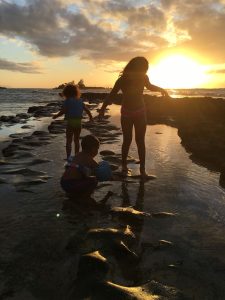University of Hawai‘i at Mānoa Food Science and Human Nutrition Program and Human Nutrition Program
E mālama ‘ia nā pono o ka ‘āina e na ‘ōpio
The traditions of the land are perpetuated by its youth

Learning Objectives
By the end of this chapter you will be able to:
- Describe the physiological basis for nutrient requirements during childhood and adolescence.
Early childhood encompasses infancy and the toddler years, from birth through age three. The remaining part of childhood is the period from ages four through eight and is the time when children enter school. A number of critical physiological and emotional changes take place during the life stage from childhood through adolescences. Children’s attitudes and opinions about food deepen. They not only begin taking their cues about food preferences from family members, but also from peers and the larger culture. In Hawai‘i, organizations such as the Kōkua Hawai‘i Foundation have implemented school programs such as ‘Āina In Schools to connect children to their local land, waters, and food. The program initiative is to address childhood health issues by fostering healthy eating habits by teaching and engaging youth about local and traditional foods.[1]
Parents also greatly impact their child’s nutritional choices. This time in a child’s life provides an opportunity for parents and other caregivers to reinforce good eating habits and to introduce new foods into the diet, while remaining mindful of a child’s preferences. Parents should also serve as role models for their children, who will often mimic their behavior and eating habits. Parents must continue to help their school-aged children and adolescents establish healthy eating habits and attitudes toward food. Their primary role is to bring a wide variety of health-promoting foods into the home, so that their children can make good choices.
Learning Activities
Technology Note: The second edition of the Human Nutrition Open Educational Resource (OER) textbook features interactive learning activities. These activities are available in the web-based textbook and not available in the downloadable versions (EPUB, Digital PDF, Print_PDF, or Open Document).
Learning activities may be used across various mobile devices, however, for the best user experience it is strongly recommended that users complete these activities using a desktop or laptop computer and in Google Chrome.
- About ‘Āina In Schools. Kōkua Hawai‘i Foundation. https://www.kokuahawaiifoundation.org/aina. Accessed February 16, 2018. ↵

